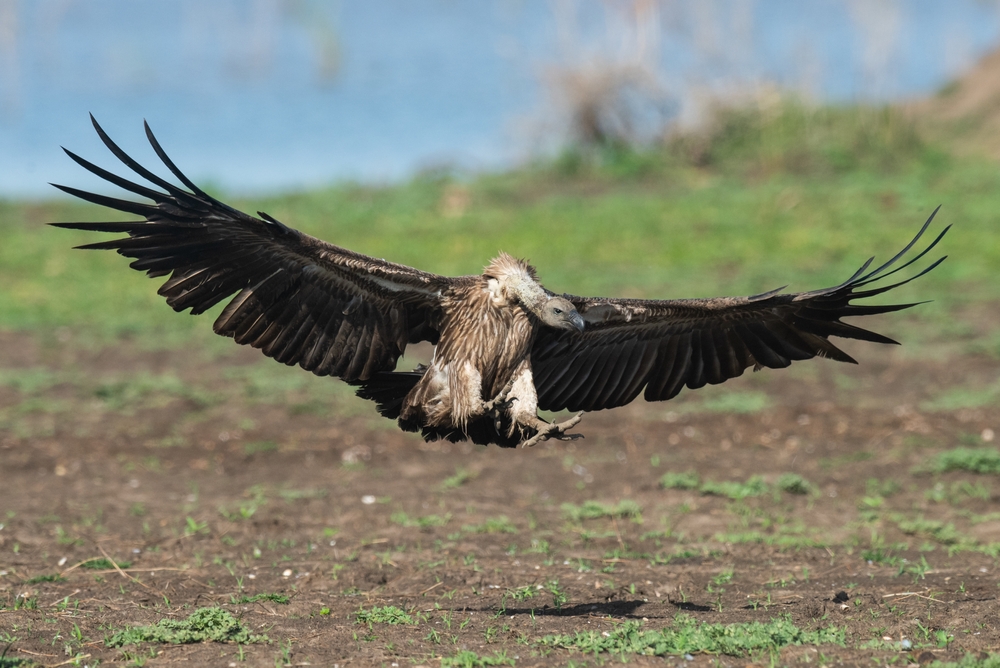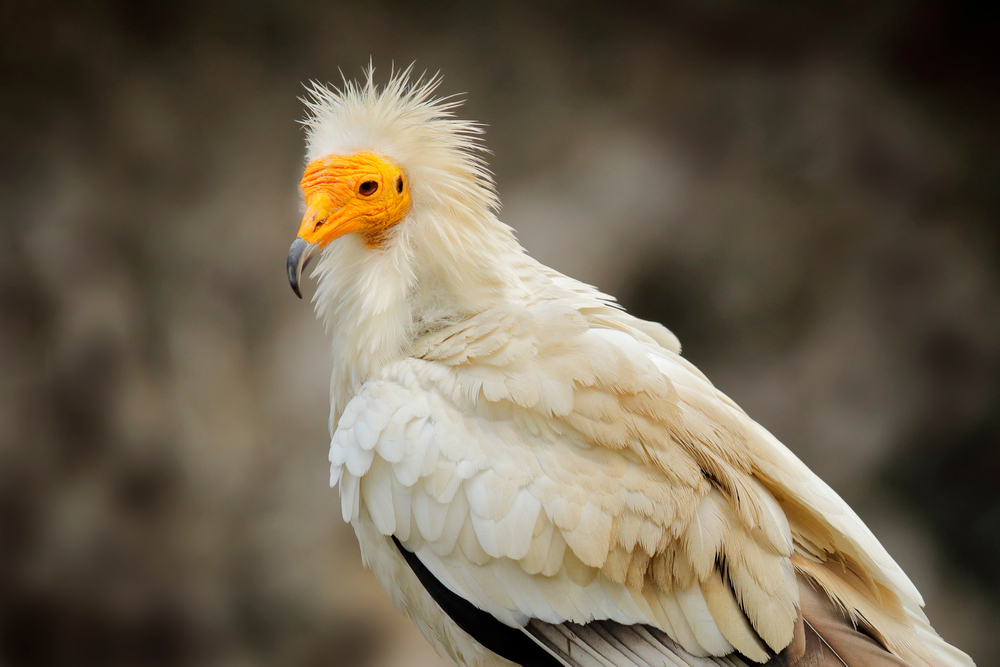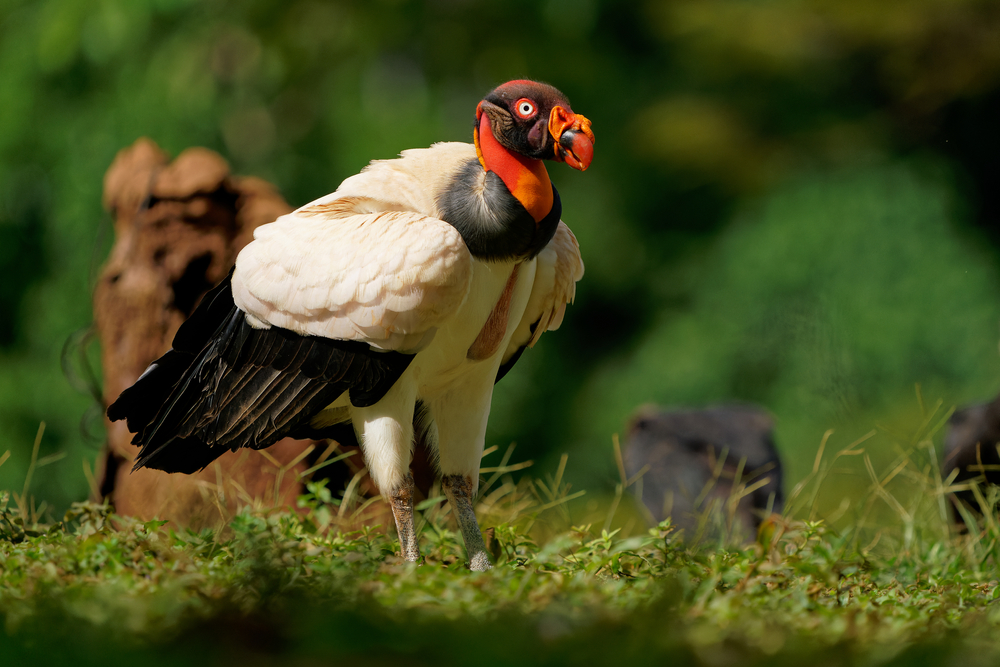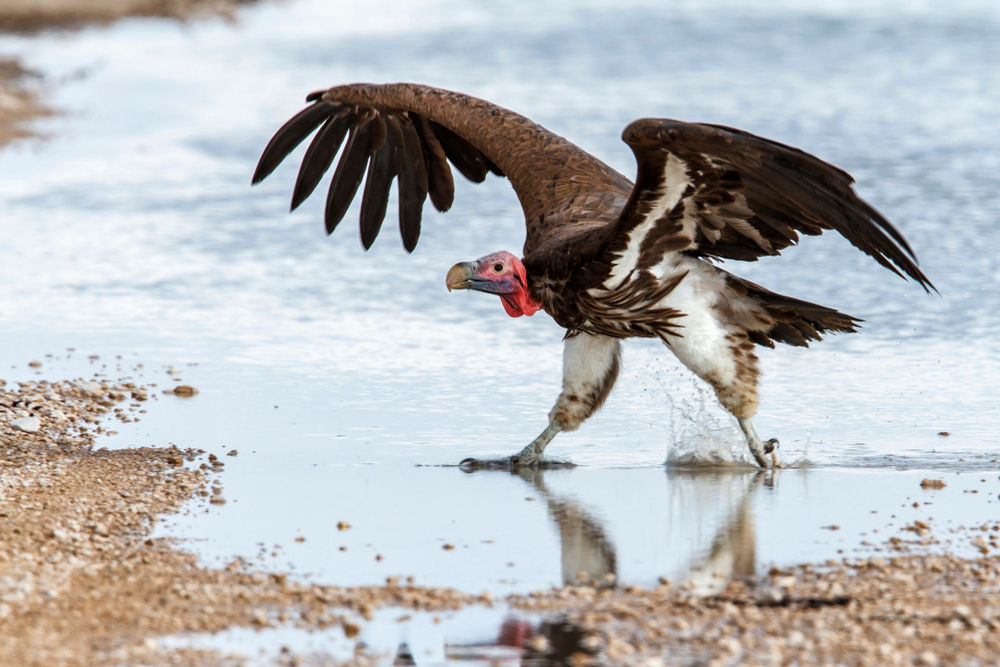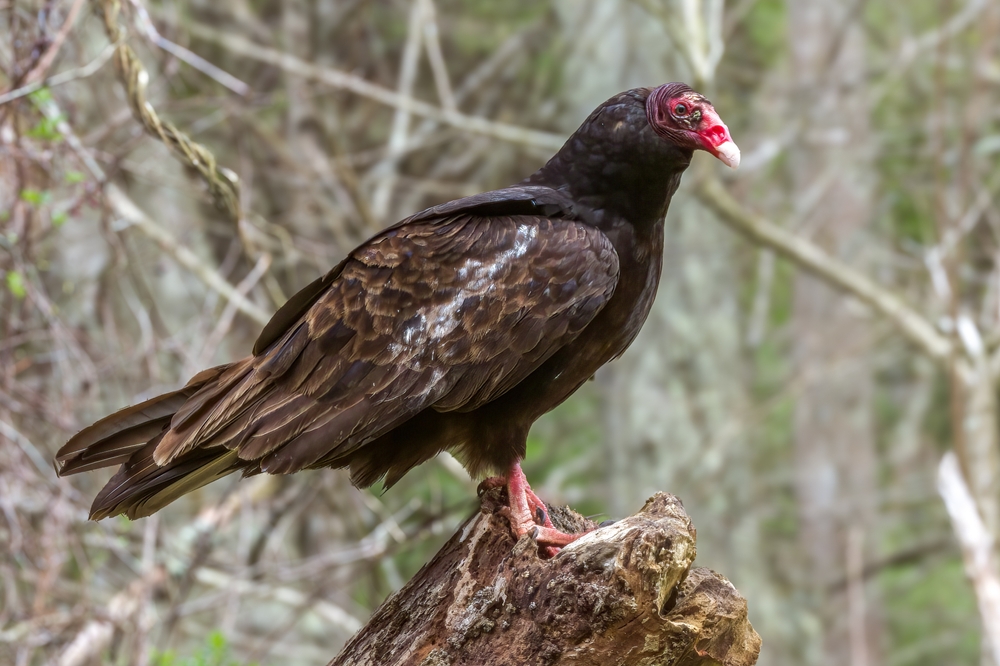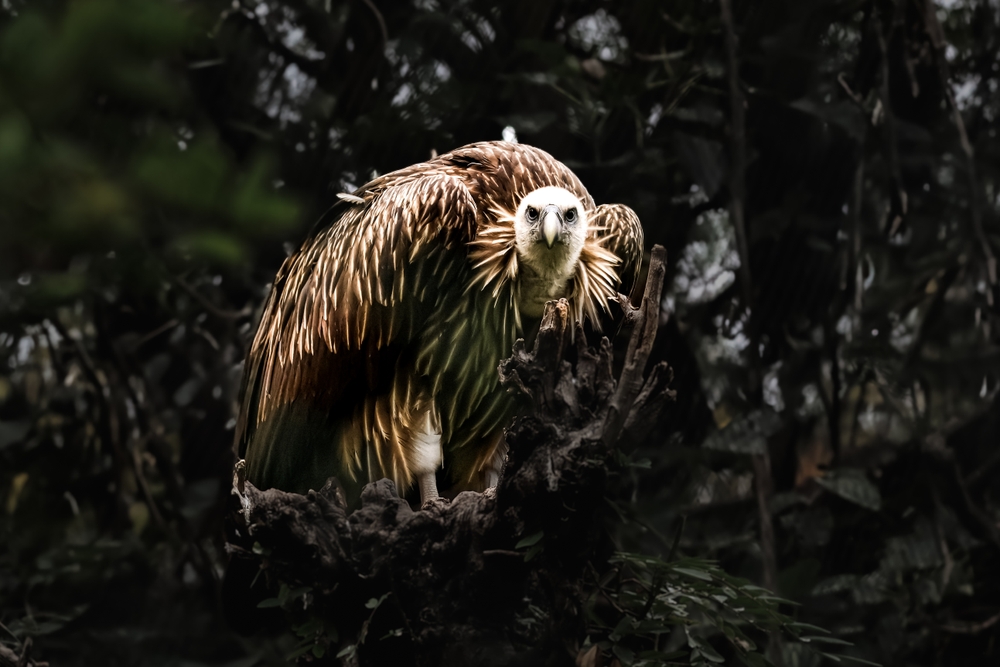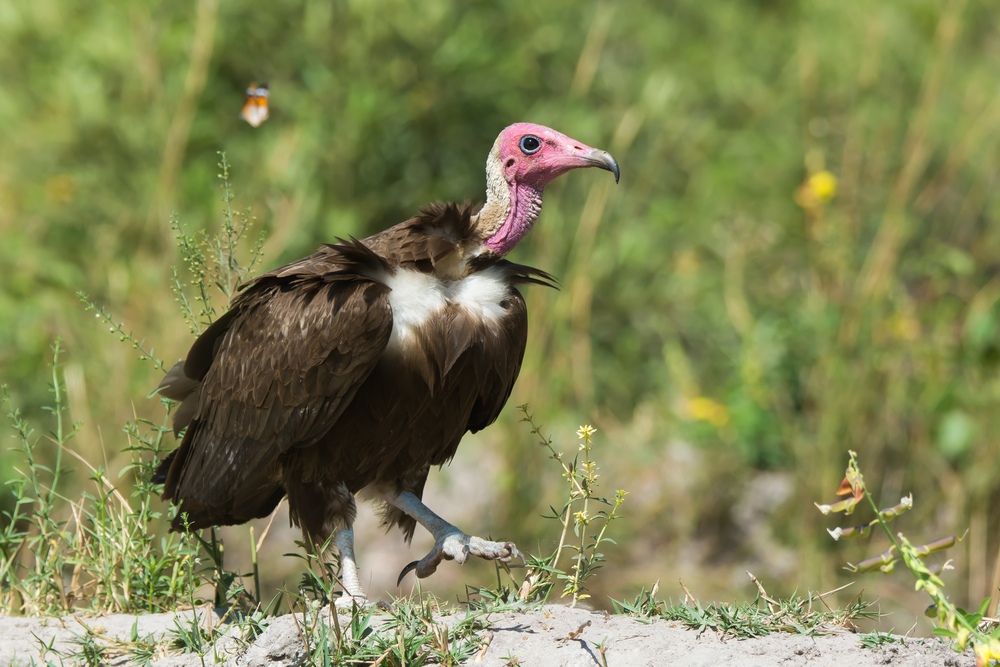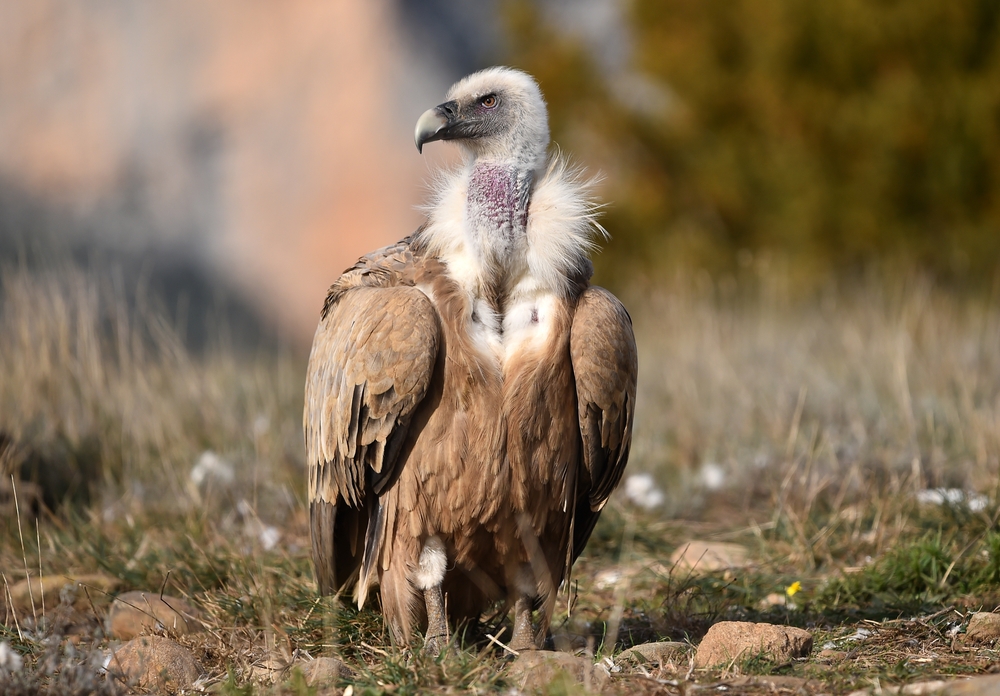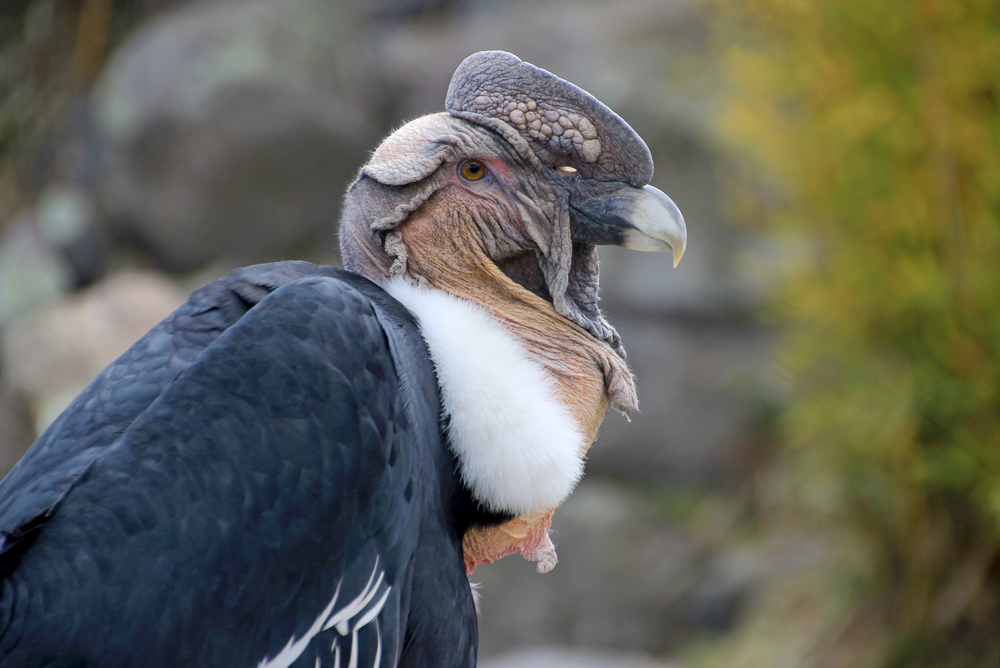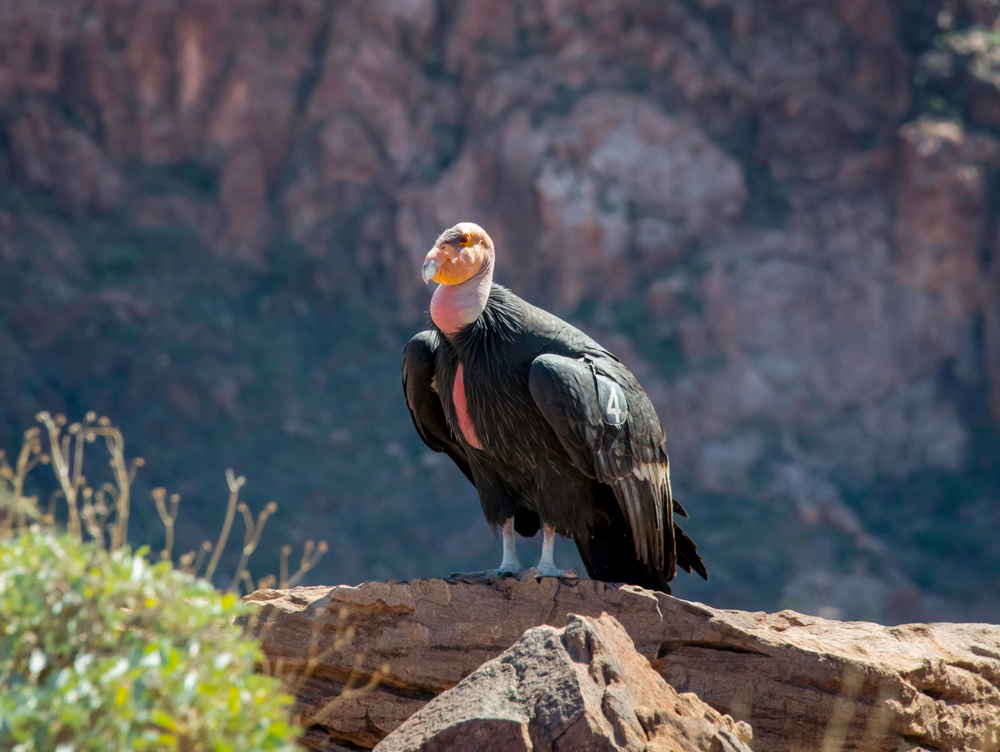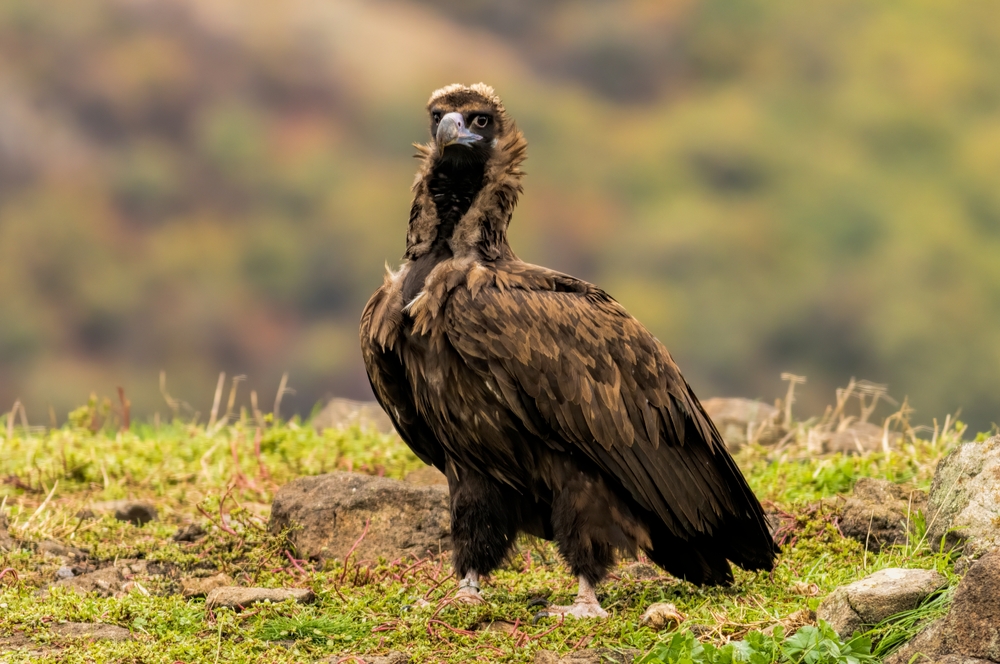The White-backed Vulture (Gyps africanus) is closely related to other Gyps vultures, such as the Rüppell’s Griffon (Gyps rueppelli) and the Eurasian Griffon (Gyps fulvus). They share similar body structure, social feeding habits, and colonial nesting behavior.
About
The White-backed Vulture (Gyps africanus), part of the Accipitridae family, is one of the most widespread vultures in sub-Saharan Africa and a vital scavenger in savanna ecosystems. Once abundant, this species has experienced dramatic population declines in recent decades, placing it among Africa’s most threatened raptors.
Measuring 78–98 cm (31–39 in) in length with a wingspan of 1.96–2.25 meters (6.4–7.4 ft), the White-backed Vulture weighs between 4–7 kg (9–15 lbs). Its plumage is generally dark brown, but it is easily distinguished by the contrasting white feathers on its lower back, visible when perched or in flight. A bare gray head and neck, along with a strong hooked bill, are well adapted for scavenging.
As an obligate scavenger, the White-backed Vulture feeds almost entirely on carrion, especially the remains of wild ungulates and livestock. It is often the most numerous species at carcasses, quickly locating food by soaring in groups and following the activity of other vultures. Its long neck and strong bill allow it to reach deep inside carcasses, where it efficiently strips meat and helps recycle nutrients back into the environment.
Breeding usually occurs in colonies, often in tall trees near water or grasslands. A pair constructs a large stick nest lined with green leaves, where the female lays a single egg. Both parents share incubation and feeding duties until the chick fledges after several months.
Despite its ecological importance, the White-backed Vulture is now listed as Critically Endangered. Major threats include poisoning (often secondary from poisoned carcasses intended for predators), habitat loss, food scarcity, and illegal hunting for traditional medicine. Conservation measures, including protected areas, vulture restaurants, and anti-poisoning campaigns, are critical to saving this keystone species.
Physical Characteristics
White-backed Vultures are medium-sized African vultures, easily recognized by their contrasting plumage and hunched silhouette:
Head and Face:
They have a bare, grayish head and neck with sparse downy feathers. The lack of head feathers helps keep them clean while feeding on carrion.
Beak:
The beak is black, strong, and hooked—adapted for tearing flesh but less powerful than that of larger vultures like the Lappet-faced or Cape Vulture.
Plumage:
Their body is covered in dark brown to black feathers, but the most distinctive feature is the patch of white feathers on the lower back, especially visible in flight. The underparts are lighter, with a pale buff to whitish chest.
Body and Build:
They have a hunched, stocky build with broad wings and relatively short tails, well-suited for soaring over open savannas. Their legs are sturdy, though not heavily adapted for grasping, since they feed almost entirely on carrion.
Size:
-
Length: 31 to 38 in (78 to 96 cm)
-
Wingspan: 6.6 to 7.5 ft (2 to 2.3 m)
-
Weight: 10 to 16 lbs (4.5 to 7.2 kg)
White-backed Vultures are built for cooperative scavenging. Their moderate size and lighter build make them agile feeders, though they often rely on larger vultures to open tough carcasses. Their striking white back patch makes them one of the most easily identified vultures in Africa.
Reproduction
The reproductive cycle of the White-backed Vulture reflects its colonial lifestyle and reliance on cooperative nesting grounds:
1. Courtship and Pair Bonding:
White-backed Vultures are monogamous and form long-term pair bonds. Courtship involves aerial displays and mutual preening at nest sites.
2. Breeding Season:
Breeding varies by region but often coincides with the dry season when carcasses are more readily available.
3. Nesting:
They are colonial nesters, often building large nesting colonies in tall trees such as acacias, baobabs, or sycamores. Each pair constructs a platform nest of sticks, lined with grass and softer material.
4. Egg Laying:
The female typically lays a single egg. Both parents share nesting responsibilities.
5. Incubation:
Incubation lasts about 55 days, with both parents taking turns to keep the egg warm and protected.
6. Chick Development:
The chick hatches with white down and is entirely dependent on its parents. Both adults feed the chick by regurgitation.
7. Fledging and Independence:
Young vultures fledge at about 3.5 to 4 months of age but may remain dependent on parental feeding for several more weeks until they learn to forage effectively.
The White-backed Vulture’s colonial nesting behavior provides some safety in numbers, but their slow reproductive rate—one egg per year—makes them highly vulnerable to population decline.
Lifespan
The White-backed Vulture is a long-lived scavenger, though its survival is increasingly threatened by human pressures across Africa.
Lifespan in the Wild:
In their natural savanna and woodland habitats, White-backed Vultures typically live 15 to 20 years, though some may survive longer under favorable conditions. Their longevity is often cut short by poisoning, habitat disturbance, or food scarcity.
Lifespan in Captivity:
With steady food supplies and veterinary care, they can live much longer—up to 30 years or more in zoos and wildlife sanctuaries.
Threats to the White-backed Vulture:
-
Poisoning: Secondary poisoning from poisoned carcasses set out for predators is the leading cause of decline.
-
Habitat Loss: Widespread tree clearing reduces available nesting sites.
-
Food Scarcity: Overhunting of wild herbivores and stricter carcass disposal from livestock reduce carrion availability.
-
Persecution: Sometimes killed due to superstition or human-wildlife conflict.
-
Electrocution & Collisions: Increasingly threatened by power lines and wind turbines.
Due to these pressures, White-backed Vultures are listed as Critically Endangered. Their long lifespan and low reproductive rate mean populations recover slowly, making conservation essential for their survival.
Eating Habits
White-backed Vultures are obligate scavengers, highly social at carcasses and well-adapted to life on the African savannas:
Diet:
They feed almost entirely on carrion, consuming the remains of medium to large herbivores such as antelope, zebra, and wildebeest. Occasionally, they may also feed on smaller animals or scraps left behind by predators.
Feeding Strategy:
Unlike Turkey Vultures, White-backed Vultures lack a strong sense of smell and rely instead on keen eyesight to locate carcasses while soaring in groups. They often watch the movements of other vultures to identify feeding opportunities.
Role at Carcasses:
They are usually among the first to arrive in large numbers at a carcass. While they lack the beak strength of larger vultures like the Lappet-faced Vulture, their numbers give them feeding advantage once a carcass is opened.
Social Behavior at Feeding Sites:
Feeding frenzies are common, with dozens or even hundreds of White-backed Vultures descending on a carcass. They jostle aggressively for position, tearing flesh quickly before larger scavengers arrive.
Feeding Technique:
They use their hooked bills to tear soft tissues and organs, swallowing chunks whole. Their bald heads and long necks allow them to reach deep into carcasses without fouling their feathers.
White-backed Vultures play a vital ecological role, rapidly cleaning up carcasses and preventing the spread of disease, but their reliance on carrion makes them highly vulnerable to poisoning events.
Uniqueness
The White-backed Vulture (Gyps africanus) is one of Africa’s most recognizable and ecologically important scavengers, with several traits that distinguish it from other vultures:
Colonial Nesters:
Unlike many vultures that nest solitarily or in pairs, White-backed Vultures breed in large colonies, often with dozens or even hundreds of nests clustered together in tall trees.
Most Widespread African Vulture:
They are the most abundant vulture species in sub-Saharan Africa, historically seen in massive numbers circling above carcasses on the savannas.
Rapid Carcass Cleaners:
Their ability to gather in large flocks allows them to strip a carcass clean within minutes, making them one of the most efficient carrion recyclers in the ecosystem.
Social Feeding Behavior:
White-backed Vultures depend on group feeding strategies, arriving quickly in large numbers and overwhelming carcasses with competitive frenzies.
Conservation Concern:
Despite once being abundant, they are now classified as Critically Endangered due to poisoning, habitat loss, and food scarcity. Their population has declined drastically in recent decades, highlighting their vulnerability.
Ecological Role:
As keystone scavengers, they prevent the spread of disease by disposing of animal remains, making their survival crucial for healthy ecosystems.
The White-backed Vulture’s colonial lifestyle, widespread presence, and vital role in carcass disposal make it one of Africa’s most important but now imperiled vulture species.
Be the First to Share Photos of This Species.
FAQ’s
1. What species is closest to the White-backed Vulture?
2. How does the White-backed Vulture compare to other vultures?
White-backed Vultures are medium-sized compared to giants like the Lappet-faced or Cape Vulture. They lack the beak strength to open large carcasses but excel in numbers, often overwhelming feeding sites. Their colonial nesting and group feeding behavior make them one of the most social vulture species.
3. What national parks provide the best opportunity to see a White-backed Vulture?
White-backed Vultures are widespread in sub-Saharan Africa. Some of the best parks to see them include:
-
Serengeti National Park, Tanzania
-
Kruger National Park, South Africa
-
Masai Mara National Reserve, Kenya
-
Etosha National Park, Namibia
-
Chobe National Park, Botswana
These open savannas and woodlands, with abundant herbivores, offer prime opportunities to observe White-backed Vultures soaring in flocks or gathering at carcasses.



































































